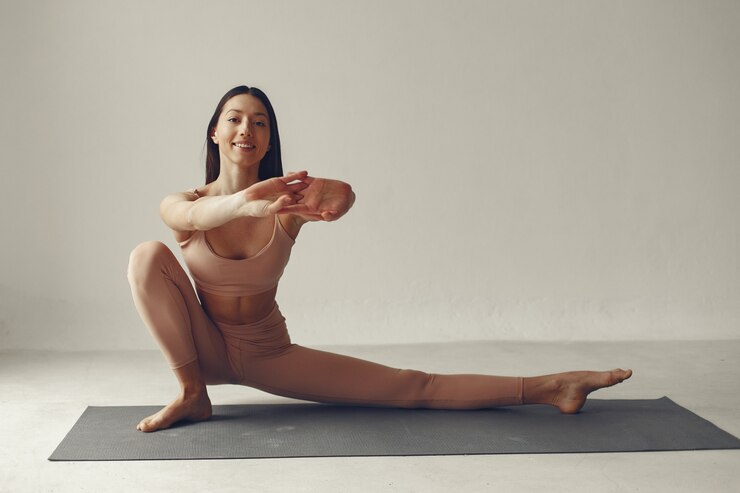Introduction
Rehabilitation is a journey of healing, and Pilates has emerged as a transformative ally in this process. This comprehensive guide will explore the therapeutic benefits of Pilates for rehabilitation, delving into how this holistic approach enhances recovery, restores functionality, and promotes overall well-being.
Section 1: Understanding Rehabilitation and the Role of Pilates
- Defining Rehabilitation: Provide an overview of rehabilitation, emphasizing its goals in restoring physical function, reducing pain, and improving quality of life.
- The Evolution of Pilates in Rehabilitation: Trace the evolution of Pilates as a rehabilitation tool, from its origins to its widespread use in contemporary healthcare settings.
Section 2: How Pilates Supports the Rehabilitation Process
- Holistic Approach to Healing: Discuss how Pilates embraces a holistic approach, addressing not just the physical aspects but also mental and emotional well-being.
- Focus on Core Stability: Highlight the central role of core stability in Pilates, explaining how a strong core supports overall body function and aids rehabilitation.
Section 3: Benefits of Pilates in Rehabilitation
- Improved Flexibility and Range of Motion: Explore how Pilates promotes flexibility and increased range of motion, vital components in the rehabilitation of various conditions.
- Muscle Strengthening without Excessive Strain: Discuss how Pilates provides a low-impact method for muscle strengthening, crucial for rehabilitation without placing excessive strain on the body.
Section 4: Pilates for Specific Rehabilitation Needs
- Post-Surgery Rehabilitation: Explore how Pilates can be tailored to aid recovery after surgeries, addressing mobility, strength, and scar tissue management.
- Spinal Rehabilitation: Discuss the benefits of Pilates in spinal rehabilitation, including exercises that promote spinal stability, flexibility, and overall spinal health.
Section 5: Pilates for Joint Rehabilitation
- Knee Rehabilitation: Highlight specific Pilates exercises beneficial for knee rehabilitation, addressing issues such as ligament injuries and osteoarthritis.
- Shoulder Rehabilitation: Discuss Pilates exercises that focus on shoulder stability and mobility, aiding in the rehabilitation of shoulder injuries and conditions.
Section 6: Pilates for Neurological Rehabilitation
- Stroke Recovery: Explore the role of Pilates in stroke rehabilitation, emphasizing exercises that aid in regaining motor control and improving coordination.
- Multiple Sclerosis (MS) and Pilates: Discuss how Pilates can benefit individuals with MS, addressing balance issues, muscle weakness, and overall mobility.
Section 7: Pilates for Chronic Pain Management
- Low Back Pain: Explore how Pilates can be used in the management of chronic low back pain, focusing on exercises that strengthen the core and improve lumbar stability.
- Fibromyalgia and Pilates: Discuss the potential benefits of Pilates for individuals with fibromyalgia, addressing pain management and promoting gentle movement.
Section 8: Tailoring Pilates for Different Rehabilitation Stages
- Early Rehabilitation: Provide insights into how Pilates can be adapted for the early stages of rehabilitation, considering limitations and building a foundation for recovery.
- Advanced Rehabilitation: Discuss more advanced Pilates exercises suitable for individuals further along in their rehabilitation journey, aiming to enhance strength and functional capacity.
Section 9: Pilates in Cardiac Rehabilitation
- Cardiac Rehabilitation Benefits: Explore the cardiovascular benefits of incorporating Pilates into cardiac rehabilitation programs, emphasizing its role in overall heart health.
- Safety Considerations: Discuss safety considerations and modifications for individuals with cardiac conditions, ensuring a tailored and safe approach to rehabilitation.
Section 10: Mind-Body Connection in Pilates Rehabilitation
- Stress Reduction and Emotional Well-being: Discuss how the mind-body connection in Pilates contributes to stress reduction and emotional well-being, crucial components of the rehabilitation process.
- Breathing Techniques: Explore the significance of controlled breathing in Pilates, aiding relaxation and enhancing oxygenation, particularly beneficial in rehabilitation.
Section 11: Real-Life Stories of Rehabilitation Success through Pilates
Feature personal accounts of individuals who have experienced significant improvements in their rehabilitation journey through the integration of Pilates into their recovery plan.
Section 12: Pilates as a Complement to Traditional Rehabilitation Modalities
- Physical Therapy Integration: Discuss how Pilates can complement traditional physical therapy, providing additional tools for rehabilitation professionals.
- Collaborative Approaches: Explore collaborative approaches where Pilates instructors work in tandem with healthcare professionals to create personalized rehabilitation plans.
Section 13: The Future of Pilates in Rehabilitation
Discuss emerging trends and innovations in the use of Pilates in rehabilitation, including virtual rehabilitation sessions, wearable technology, and personalized rehabilitation apps.
Conclusion
Summarize the key takeaways, emphasizing that Pilates offers a versatile and effective approach to rehabilitation, catering to a wide range of conditions and stages in the healing process.
Discover more from Pilates All Ages
Subscribe to get the latest posts sent to your email.
